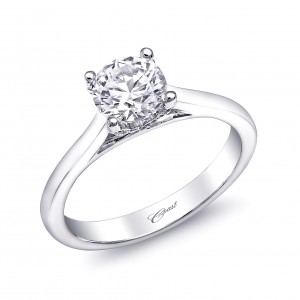Diamond Cutting: How Does It Work? (Part One)

Raw diamonds are much larger than cut diamonds. When a diamond is cut, it is not uncommon for its weight to be reduced by as much as 50 percent. Diamonds are cut into many different shapes. Often, the result is dictated as much by the internal structure of the diamond as it is technique and science.
One of the most important steps in the diamond cutting process is the preliminary analysis of the stone. This is done before any cuts or breaks are made. Sometimes, X-ray diffraction can be used to analyze the crystallographic structure of the diamond. Most raw diamonds will have flaws and non-diamond inclusions. The cutter often helps to eliminate these when making their initial cut. Finally, after careful analysis, it is time to get started.
This first cut is commonly referred to as “cleaving” the diamond. Before the cut is made, the cutter may secure the diamond using a wax or cement mold. Then, they locate the diamond’s tetrahedral plane, which is a location of weakness in the otherwise extraordinarily strong stone. Traditionally, the first cut was made using a hammer and chisel. More modern techniques make use of lasers or diamond saws. And all of this was just the beginning.
Check back soon for part two of our series on diamond cutting.


